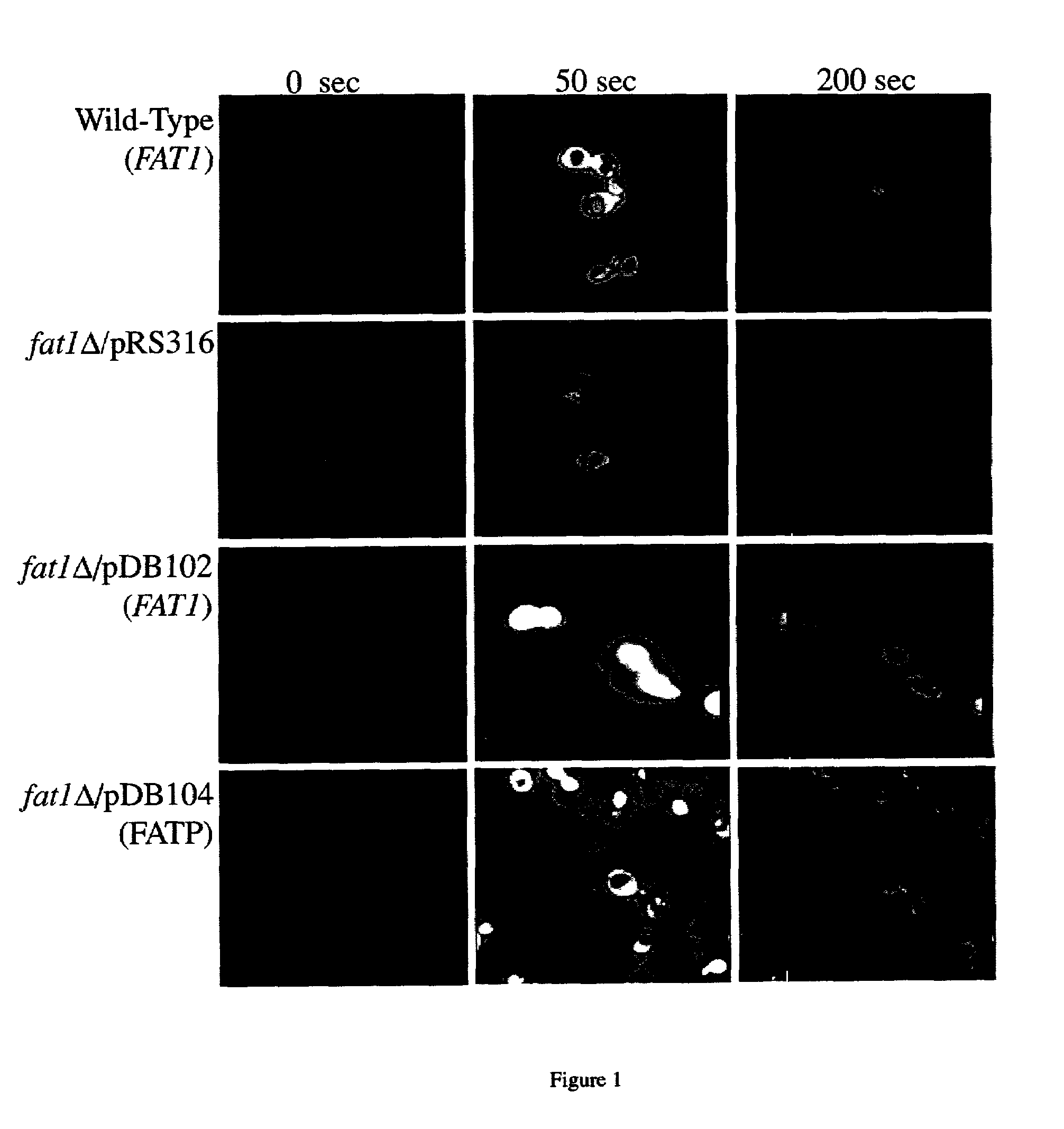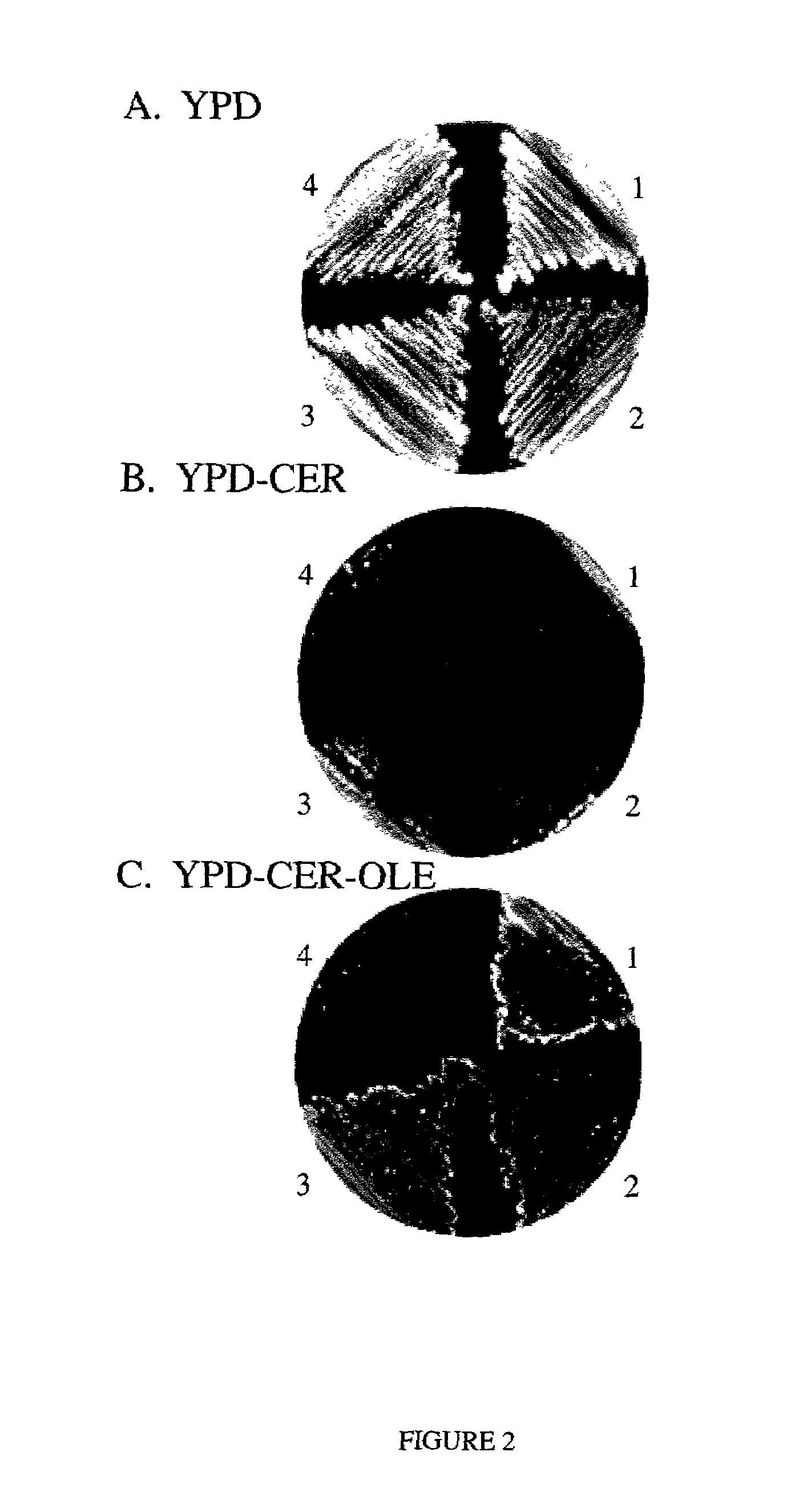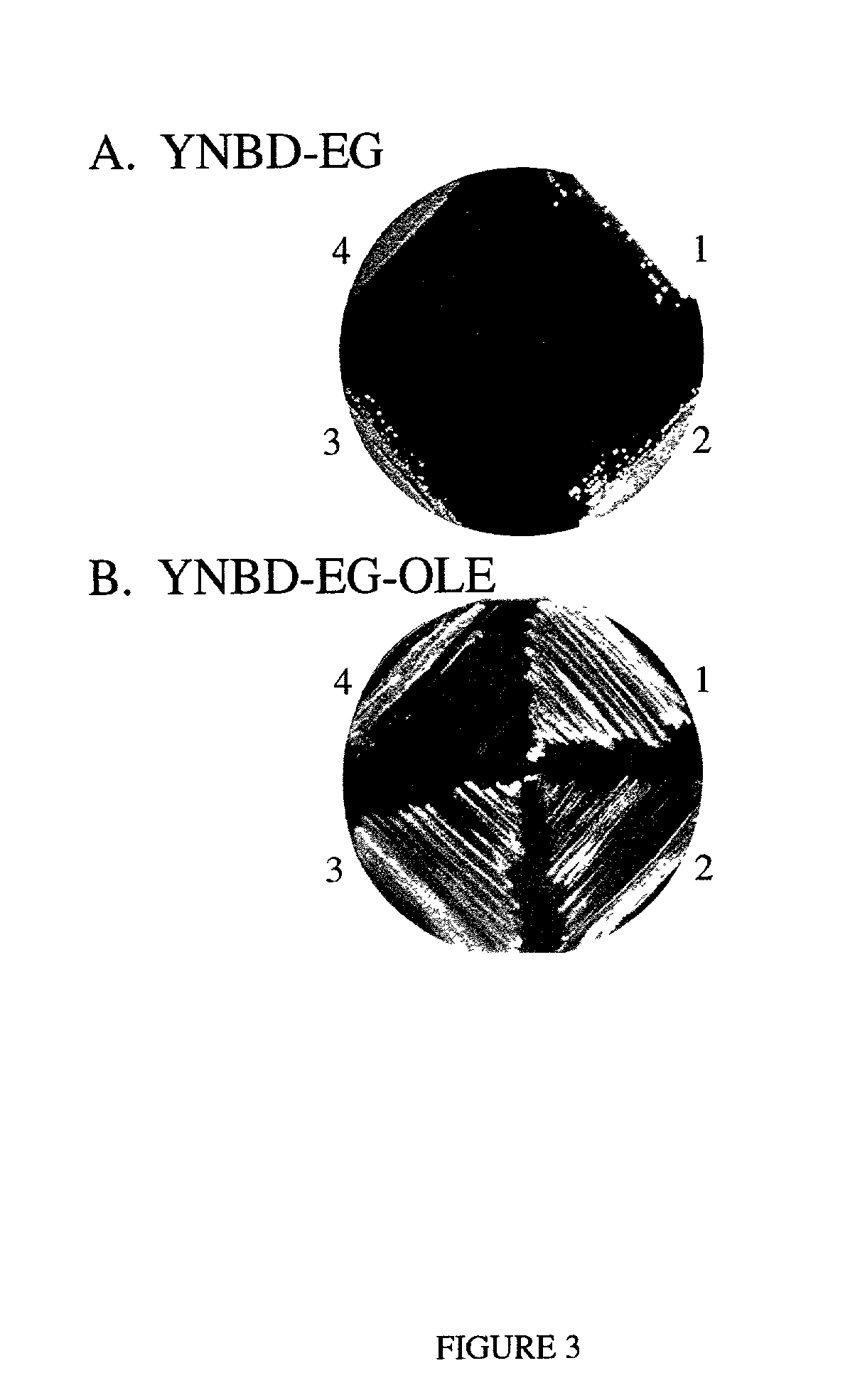System for screening fatty acid transport inhibitors, methods of use and modulators identified thereby
- Summary
- Abstract
- Description
- Claims
- Application Information
AI Technical Summary
Benefits of technology
Problems solved by technology
Method used
Image
Examples
example 1
[0085]One model of uptake of exogenous long-chain fatty acids across the plasma membrane suggests that long-chain fatty acids freely diffuse across the membrane thereby obviating the need for any type of transporter. In this case, uptake is thought to be regulated either at the level of fatty acid delivery to the membrane or by subsequent metabolic utilization of the fatty acid. The second model hypothesizes one or more specific membrane-bound proteins facilitate the transport of long-chain fatty acids across the membrane. The identification of specific membrane-bound proteins that participate in the transport of exogenous long-chain fatty acids is consistent with the findings that this process is highly regulated in different cell types. Three main classes have been described in eukaryotic cells: Fatty Acid Translocase (FAT), Fatty Acid Binding Protein—plasma membrane-bound (FABPpm), and Fatty Acid Transport Protein (FATP).
[0086]The FATP-family encompasses a highly conserved group ...
example 2
[0116]Exogenous long-chain fatty acids are activated to coenzymeA derivatives prior to metabolic utilization. In the yeast Saccharomyces cerevisiae the activation of these compounds prior to metabolic utilization proceeds through the fatty acyl-CoA synthetases Faa1p and Faa4p. Faa1p or Faa4p are essential for long-chain fatty acid import suggesting that one or both of these enzymes are components of the fatty acid transport system, which also includes Fat1p. By monitoring the intracellular accumulation of the fluorescent long-chain fatty acid analogue C1-BODIPY-C12, long-chain fatty acid transport was shown to be severely restricted in a faa1Δ faa4Δ strain. These data established for the first time a mechanistic linkage between the import and activation of exogenous fatty acids in yeast.
[0117]Import of fatty acids into yeast is an essential function when cells are auxotrophic for fatty acids. This occurs in the natural environment when oxygen is limiting due to inhibition of the O2-...
PUM
| Property | Measurement | Unit |
|---|---|---|
| Fraction | aaaaa | aaaaa |
| Fraction | aaaaa | aaaaa |
| Fraction | aaaaa | aaaaa |
Abstract
Description
Claims
Application Information
 Login to View More
Login to View More - R&D
- Intellectual Property
- Life Sciences
- Materials
- Tech Scout
- Unparalleled Data Quality
- Higher Quality Content
- 60% Fewer Hallucinations
Browse by: Latest US Patents, China's latest patents, Technical Efficacy Thesaurus, Application Domain, Technology Topic, Popular Technical Reports.
© 2025 PatSnap. All rights reserved.Legal|Privacy policy|Modern Slavery Act Transparency Statement|Sitemap|About US| Contact US: help@patsnap.com



